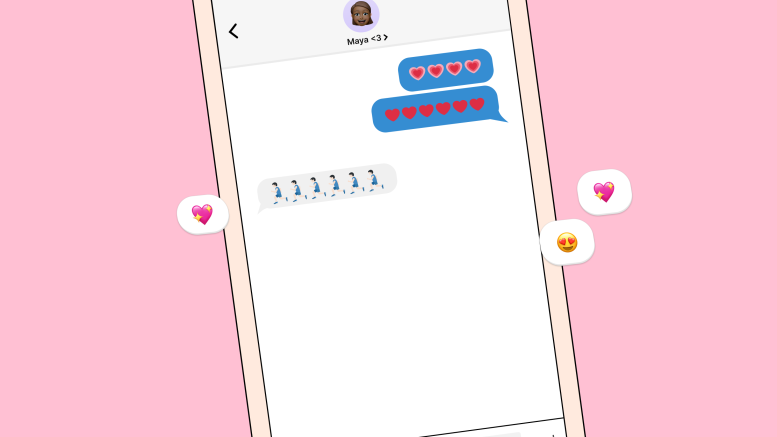After eight years in a cozy, safe relationship with my high school sweetheart, I plunged into the chaotic world of dating apps. We sat down together to create our first dating profiles, post-bar-drunk and giggling. Little did I know that this silly moment would be the gateway to a year-long journey through modern dating culture’s trials, tropes and heartbreaks.
I didn’t expect the culture. The secret dating culture that single people hid from those living under the relationship rock — customs, expectations and language — were all aspects that I had to learn, and fast. Navigating through ghosting, rosters and breadcrumbing, it felt like I was learning a new language, one spoken fluently by the single people around me but utterly foreign to me.
As I struggled with the ups and downs of dating, I found myself obsessing over every text and over-analyzing every interaction. My roommate noticed my distress and casually dropped a term that would change everything: anxious attachment.
After an explanation from my roommate and a half-read book on attachment styles, I was ready to face my next connection confidently, but immediately fell into the same pattern as I did with the last guy. And this time, I was ghosted… twice.
Ghosting, the abrupt severing of contact without explanation, is a common experience. According to Psychology Today, 20 per cent of adults have been ghosted before and the number is likely much higher for young people.
This experience made me realize the tumultuous relationship between connections, dating apps and attachment styles.
Attachment theory, developed by developmental psychologist John Bowlby, explains how children’s early relationships with caregivers shape their adult relationships. However, psychiatrist Amir Levine, influenced by further studies, expanded on the theory, linking childhood attachments styles to adult behaviours in relationships. The four attachment styles — secure, anxious, avoidant and disorganized — affect how individuals connect with others.
Anxious types crave emotional intimacy but fear losing it, tend to have low self-esteem and wind up becoming overly needy. Avoidant types crave intimacy but feel quickly overwhelmed and smothered. They often push the connection away. Disorganized types experience a mixture of both anxious and avoidant styles. Finally, secure types don’t feel smothered or overcome and can move forward confidently, maintaining emotional stability and healthy boundaries.
In the context of digital dating, these attachment styles can be amplified. Avoidants may find it easier to ghost due to the lack of face-to-face interaction, while anxious individuals may feel compelled to check in constantly. This feeds their fears of being ignored, ironically increasing their chances of being ghosted.
As an anxious attacher, I have fallen victim to feeling as though I should be constantly in contact with people I’m dating. And if we’re not texting every day, I would begin to panic. It became my cycle. I start talking to someone, invest too heavily too quickly without truly knowing them, and then pin all my hopes, dreams and self-worth on whether they text me back. And if I match up with an avoidant, a common pairing, my need to latch on and hold tight will inevitably make them feel smothered and crave independence, validating my fears and self-doubts.
The push-pull dynamic between anxious and avoidant individuals can create a toxic cycle, often referred to as the anxious-avoidant trap. As one partner seeks closeness, the other retreats, leading to a cycle of pursuing and distancing that can be difficult to break.
I’m emphasizing anxious attachment as it’s my personal experience, but I hold a deep empathy for those who are avoidant. Psychiatrist Amir Levine, who co-wrote the book Attached on the subject, states that avoidants have the potential to suffer more than anxious types, desiring deep connection but ultimately pushing loved ones away and facing loneliness.
Luckily, cycles can be broken. It is possible to heal your insecure attachment style. And I know firsthand because I’ve begun. Through understanding attachment theory, understanding myself, working with my long-term therapist and finding a connection that feels stable, I’ve made progress.
You can work through attachment styles by building trust. Trust can be built by providing reassurance for anxious types, providing space with increasing emotional connection for avoidant types and ultimately being mindful of both your and your partner’s attachment style. Keeping open communication is vital.
In my most recent connection, I’ve built trust, worked through my texting anxiety and accepted that our connection is strong in whatever form it takes. This relationship has been pivotal in helping me understand what it feels like to develop a more secure attachment to feel a sense of calmness.
Through this journey, I’ve learned to recognize my anxious patterns early on before diving in too deep. It’s been empowering to realize that I can approach dating with more self-awareness and emotional resilience rather than just reacting to every text or lack thereof.
I’ve come a long way from that drunken dating profile to now. Dating apps might have plunged me into a whirlwind of emotions, but also led me to a deeper understanding of myself. As dating continues to evolve, so does my approach, which is now grounded in a more secure sense of self.
Ultimately, successful connections, whether online or offline, depend on understanding our attachment styles and finding connections that help us grow.


